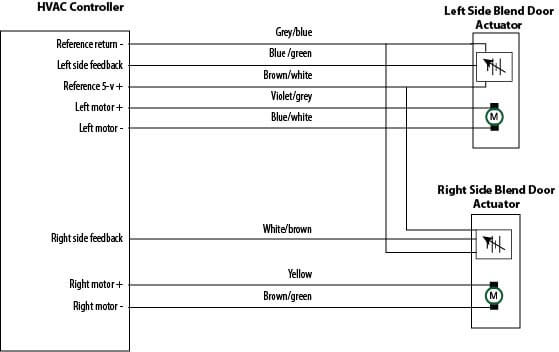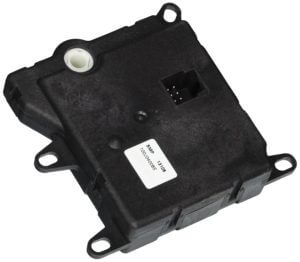Ford heater not working: Tips and Solutions
How to Diagnose and Fix Ford Heater Issues
Experiencing a lack of heat in your Ford vehicle during cold weather can be frustrating and uncomfortable. The heating system in a car is crucial for maintaining a comfortable cabin temperature and ensuring the defrost function works to keep your windshield clear. If your Ford vehicle’s heating system isn’t working, there are several steps you can take to diagnose and potentially fix the issue. This guide will walk you through the possible causes and solutions.
The most common causes of no heat or low heat in a Ford
• Low coolant level—The heater relies on hot coolant from the engine to warm the air before it enters the cabin. Low coolant levels can result in insufficient heat. Check the coolant level in the radiator and the overflow tank. If the coolant is low, top it up with the recommended type of coolant for your Ford vehicle. If you frequently need to add coolant, there may be a leak that requires professional attention to find the cause.
• Faulty Thermostat— The thermostat regulates the engine’s temperature by controlling the flow of coolant. A stuck-open thermostat prevents the engine from reaching its optimal operating temperature, leading to insufficient heat. Replace the thermostat. This is a relatively inexpensive part, and replacement can often resolve heating issues.
• Clogged Heater Core— The heater core, a small radiator-like component, can become clogged with debris or corrosion, reducing the flow of hot coolant. With the engine at operating temperature, touch the two hoses running to the heater core. They should both be hot. If only one hose is hot, the heater core is clogged. Flushing the heater core can often clear the blockage. This involves circulating a cleaning solution through the core to remove debris. If flushing doesn’t work, the heater core may need to be replaced.
• Blend Door Issues— A blend door directs airflow through the heater core or the air conditioning evaporator. If the blend door actuator is malfunctioning, it can prevent warm air from entering the cabin.
Diagnose blend door issues by watching the blend door actuator shaft as you change the temperature setting. If the shaft doesn’t move, the cause may be a bad actuator or a stuck blend door. Remove the actuator and try moving the door by hand.
Where to start diagnosis with Ford heater issues
Always start by checking the engine coolant level. Low coolant will result in low heat or no heat. If low, add coolant. Next, check the hoses to the heater core when the engine is hot. Both the incoming and outgoing hoses should be HOT. If one hose is hot and the other cold, you’ve got a clogged heater core, a restriction in the system or air in the system. If both hoses are hot, chances are high you’ve got a BLEND DOOR or BLEND DOOR ACTUATOR ISSUE.
Diagnose and fix a blend door actuator
The blend door actuator in a late-model Ford heater is an electric motor with position feedback. It opens and closes the blend door to provide the requested air temperature. The blend door actuator is controlled by the HVAC controller. The controller provides + and – voltage to the blend door motor and reverses the voltage to move the motor in the opposite direction. The controller also supplies a 5-volt reference signal to the blend door actuator variable resistor. As the motor moves, the variable resistor provides a varying voltage reading indicating position.
During a calibration cycle the HVAC controller commands the actuators to open and close until they reach internal stops built into the HVAC case. Once calibrated, the controller knows the variable voltage readings for full open and full close.
Ford heater blend door actuator trouble codes
Before you start replacing parts, you should know that the controller actually stores trouble codes to point you in the right direction. The two most common blend door actuator trouble codes are:
B2266 (Left Side Blend Door Circuit Failure—the controller has provided voltage to the driver’s side actuator but doesn’t see a change in feedback voltage from the variable resistor.
B2267 (Right Side Blend Door Circuit Failure— the controller has provided voltage to the passenger side actuator but doesn’t see a change in feedback voltage from the variable resistor.
How to test Ford heater blend door actuator
The Ford shop manual shows several ways to test the blend door actuator.
Test resistance on the variable resistor at the actuator
Jumper the motor connections at the actuator with fused battery voltage to move the motor.
Test for + and – on each actuator connector coming from the HVAC controller. If you see those voltages when commanding a temperature change that confirms the controller is working properly.
Refer to the shop manual for the different resistance values.
Test the blend door actuator

Ford heater blend door actuator wiring diagram
The Ford Heater temperature control issue comes down to this:
It’s either an HVAC controller issue or,
A problem with the variable resistor inside the blend door actuator, in which case you must replace the actuator or,
A problem with the blend door actuator motor, in which case you must replace the actuator or,
A problem with a binding or stuck blend door.
Best advice for diagnosing and fixing a Ford heater blend door actuator problem
Remove the blend door actuator and try opening and closing

Ford blend door actuator
the blend door by hand. If it moves freely, you’ve eliminated the blend door itself as the cause. Using a fused jumper wire, provide power and ground to the actuator using the wiring diagram to see if the motor operates. If the motor doesn’t move, replace the actuator. In most cases, it’s the actuator that’s bad. However, you are risking the cost of the actuator if the problem turns out to be in the HVAC controller. Get a shop manual and test the resistance values and + and – voltages in the wiring harness coming from the HVAC controller.
©, 2017 Rick Muscoplat
Posted on by Rick Muscoplat
